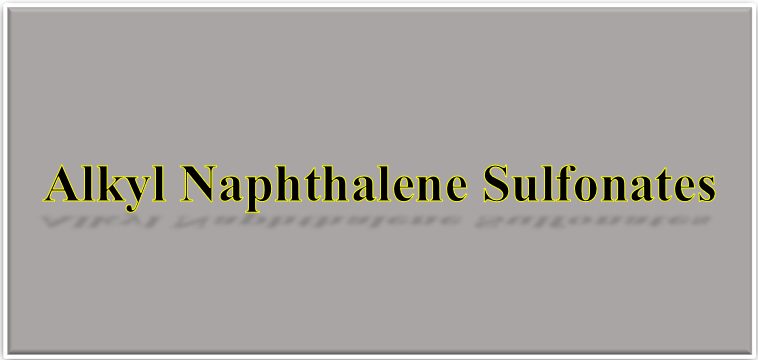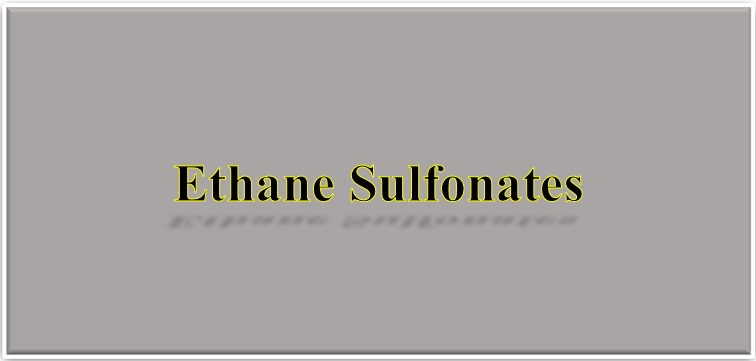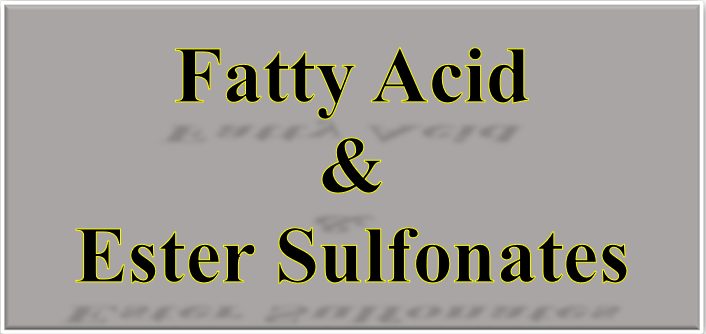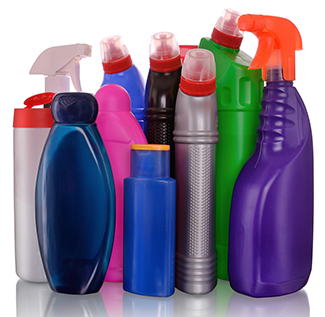A simple classification of surfactants based on the nature of the hydrophilic group is commonly used. Three main classes may be distinguished, namely anionic, cationic, nonionic and amphoteric. In some references, a fifth class of surfactants, usually referred to as polymeric surfactants, has long been used for the preparation of emulsions and suspensions and their stabilization.
Anionic Surfactants:
Anionic surfactants: Surfactants that carry a negative charge on the surface-active portion of the molecule.
Anionics are manufactured and used in greater volume than all other types of surfactants. The reason is the ease and low cost of manufacture, and they are used in practically every type of detergent, the main application of surfactants.
For optimum detergency, the hydrophobic group is a linear paraffin chain in the range C12-C16 and the polar group should be at one end of the chain.
The main types of anionics commercially available are:
- Carboxylates: soaps; ethoxy carboxylates; ester carboxylates
- Isethionates
- Phosphates esters
- Sarcosinates (amide sarcosinates)
- Sulfates: alcohol; alcohol ether; alkanolamides ethoxylates; natural oils; nonylphenol ether.
- Sulphonates: alcohol ether (ethane) or alkyl phenyl ether; paraffin; alkylbenzene; fatty acids and esters; naphthalene derivatives; olefin sulphonates; petroleum sulphonates
- Sulphosuccinates and sulphosuccinamates
- Taurates
Cationic Surfactants:
Surfactants carrying a positive charge on the surface-active portion of the molecule.
cationic surfactants play an important role as antiseptic agents in cosmetics, as general fungicides and germicides, as fabric softeners and hair conditioners, and in a number of bulk chemical applications. Many new applications for cationic surfactants have been developed so that these compounds can no longer be considered to be specialty chemicals; rather, they truly fall into the category of bulk industrial surfactant products.
Commercial cationic surfactants are usually produced as a mixture of homologs, a point that must always be kept in mind when discussing physical properties and applications of such materials. As previously noted, slight variations in the chemical structure or composition of the hydrophobic group of surfactants may alter their surface-active properties, leading to the possibility of important errors in the interpretation of results and in performance expectations.
The most important classes of these cationics are the:
- simple amine salts.
- quaternary ammonium compounds.
- amine oxides.
The economic importance of the cationic surfactants has increased significantly because of some of their unique properties. Most cationics are biologically active in that they kill or inhibit the growth of many microorganisms. They have also become extremely important to the textile industry as fabric softeners, waterproofing agents, and dye-fixing agents. Because many important mineral ores and metals carry a net negative charge, the cationic surfactants are also useful in flotation processing, lubrication, and corrosion inhibition, and they are gaining importance as surface modifiers for the control of surface tribological properties, especially electrostatic charge control.
Amphoteric Surfactants:
The family of surfactants commonly referred to as ‘‘amphoterics’’ are surface-active materials that contain, or have the potential to form, both positive and negative functional groups and can be either cationic or anionic surfactant depending on the pH or other solution conditions.
Amphoteric surfactants are sometimes referred to as zwitterionic molecules. They are soluble in water, but the solubility shows a minimum at the isoelectric point. Amphoterics show excellent compatibility with other surfactants, forming mixed micelles. They are chemically stable both in acids and alkalis. The surface activity of amphoterics varies widely and it depends on the distance between the charged groups and they show a maximum in surface activity at the isoelectric point.
The main characteristic of amphoteric surfactants is their dependence on the pH of the solution in which they are dissolved. In acid pH solutions, the molecule acquires a positive charge and it behaves like a cationic, whereas in alkaline pH solutions they become negatively charged and behave like an anionic.
The change in charge with pH of amphoteric surfactants affects their properties, such as wetting, detergency, foaming, etc. At the isoelectric point, the properties of amphoterics resemble those of nonionics very closely. Below and above the i.e.p, the properties shift towards those of cationic and anionic surfactants respectively. Zwitterionic surfactants have excellent dermatological properties. They also exhibit low eye irritation and they are frequently used in shampoos and other personal care products (cosmetics). Due to their mild characteristics, i.e. low eye and skin irritation, amphoterics are widely used in shampoos. They also provide antistatic properties to hair, good conditioning and foam booster.
Although amphoteric materials represent only a small portion of total worldwide surfactant production, their market position is increasing significantly because of the unique properties that such materials can impart to a formulation. It is particularly important that they often show considerable synergism when employed with other classes of surfactants. Their nature can make them especially useful in applications requiring biological contact as, for example, in ‘‘no tears’’ baby shampoos.
In general four classes of materials are most often encountered:
- imidazoline derivatives.
- betaines and sulfobetaines.
- amino acid derivatives.
- lecithin and related phosphatides.
Charge-separated compounds such as amine oxides and sulfoxides, could easily be included in the amphoteric classification.
Nonionic surfactants:
Surfactants that carry no electrical charge, as their water solubility is derived from the presence of polar functionalities capable of significant hydrogen bonding interaction with water (e.g., polyoxyethylenes, sugars, polyglycidols)
In fact, there may be several very good reasons for having surfactant materials that are electrically neutral. Some of the most important advantages can include a significantly lower sensitivity to the presence of electrolytes in the system, a reduced effect of solution pH, and the synthetic flexibility of the ability to design the required degree of solubility into the molecule by the careful control of the size of the hydrophilic group.
An interesting characteristic of many nonionic surfactants, especially the polyoxyethylene (POE) family, is that they exhibit an inverse temperature–solubility relationship; that is, as the solution temperature is increased, their solubility in water decreases.
The phenomenon is attributed to a disruption of specific interactions, in this case, hydrogen bonding, between the water and the POE units in the molecule. The temperature at which components of the POE surfactant begin to precipitate from solution is defined as the ‘‘cloud point.’’
’’ In general, the cloud point of a given family of surfactants (with the same hydrophobic group) will increase with the average number of OE groups.
Cloud point (CP): For nonionic surfactants—the temperature (or temperature range) at which the surfactant begins to lose water solubility and a cloudy dispersion results; the surfactant may also cease to perform some or all of its normal functions as a surfactant.[
Specialty surfactants
- Fluorocarbon Surfactants
- Silicone Surfactants
- Gemini surfactants
- Surfactants derived from mono- and polysaccharides
- Naturally occurring surfactants
- Biosurfactants
- Polymeric surfactants
Sources:
- Amphoteric Surfactants, B. R. Buestein and C. L. Hiliton, Marcel Dekker, New York, 1982.
- Nonionic Surfactants, M. J. Schick (ed.), Marcel Dekker, New York, 1966.
- Nonionic Surfactants: Physical Chemistry, M. J. Schick (ed.), Marcel Dekker, New York, 1987.
- Anionic Surfactants, W. M. Linfield (ed.), Marcel Dekker, New York, 1967.
- Anionic Surfactants – Physical Chemistry of Surfactant Action, E. H. Lucasssen-Reynders, Marcel Dekker, New York, 1981.
- Surface Active Ethylene Oxide Adducts, N. Schonfeldt, Pergamon Press, USA, 1970.
- Handbook of Surfactants, M.R. PORTER, Springer Science+Business Media, First edition 1991.
- Applied Surfactants, Principles and Application, Tharwat F. Tadros.
- An Introduction to Surfactants, Tharwat F. Tadros.
- Surfactant Science and Technology, 3rd Edition, Drew Myers













